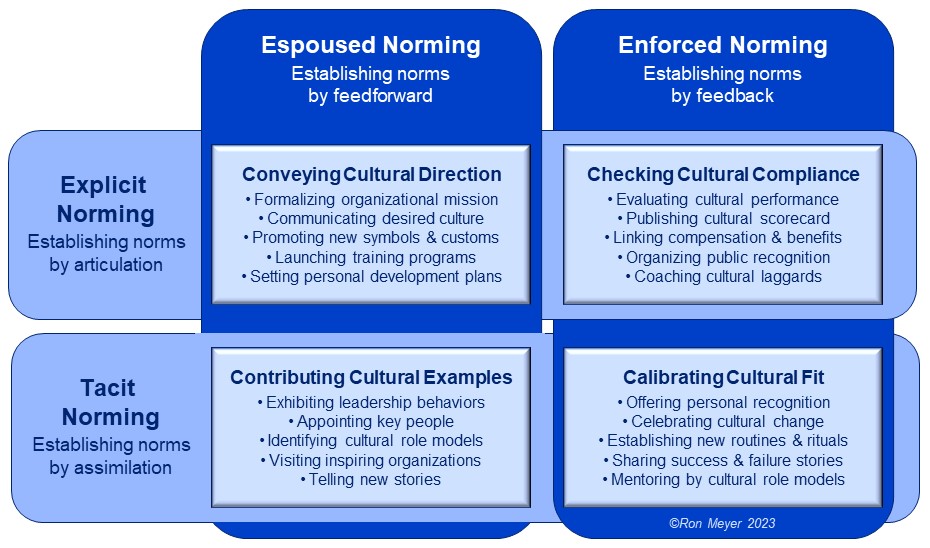A culture is the set of unwritten social rules determining how people are expected to behave – norms that govern how we should conduct ourselves, literally telling us what is normal. These norms are rooted in certain shared beliefs (what is true) and values (what is important). Any group of people can develop a culture, from a nation to an organization or even a team.
Cultures are notoriously difficult to change, as the shared beliefs and values seem self-evident to the people immersed in the culture and individuals internalize behavioral norms as part of their identity, deriving moral certainty, pride, and a sense of community from them.
The Cultural Fabric Model describes the four types of “threads” that can be employed to weave a renewed culture for any group of people, whether a team, department, unit, organization, industry, or nation. The metaphor of weaving a fabric is intended to convey the notion that cultures are not constructed like a machine, but delicately spun and knit together from a multitude of initiatives, none of which is strong enough by itself, but jointly create a robust and durable whole. The model suggests there are four types of culture-weaving initiatives (in the light blue rectangles), that differ along two dimensions, described in more detail below.

The four types of culture-weaving initiatives differ along two dimensions:
These two dimensions lead to the following four types of culture-weaving initiatives: